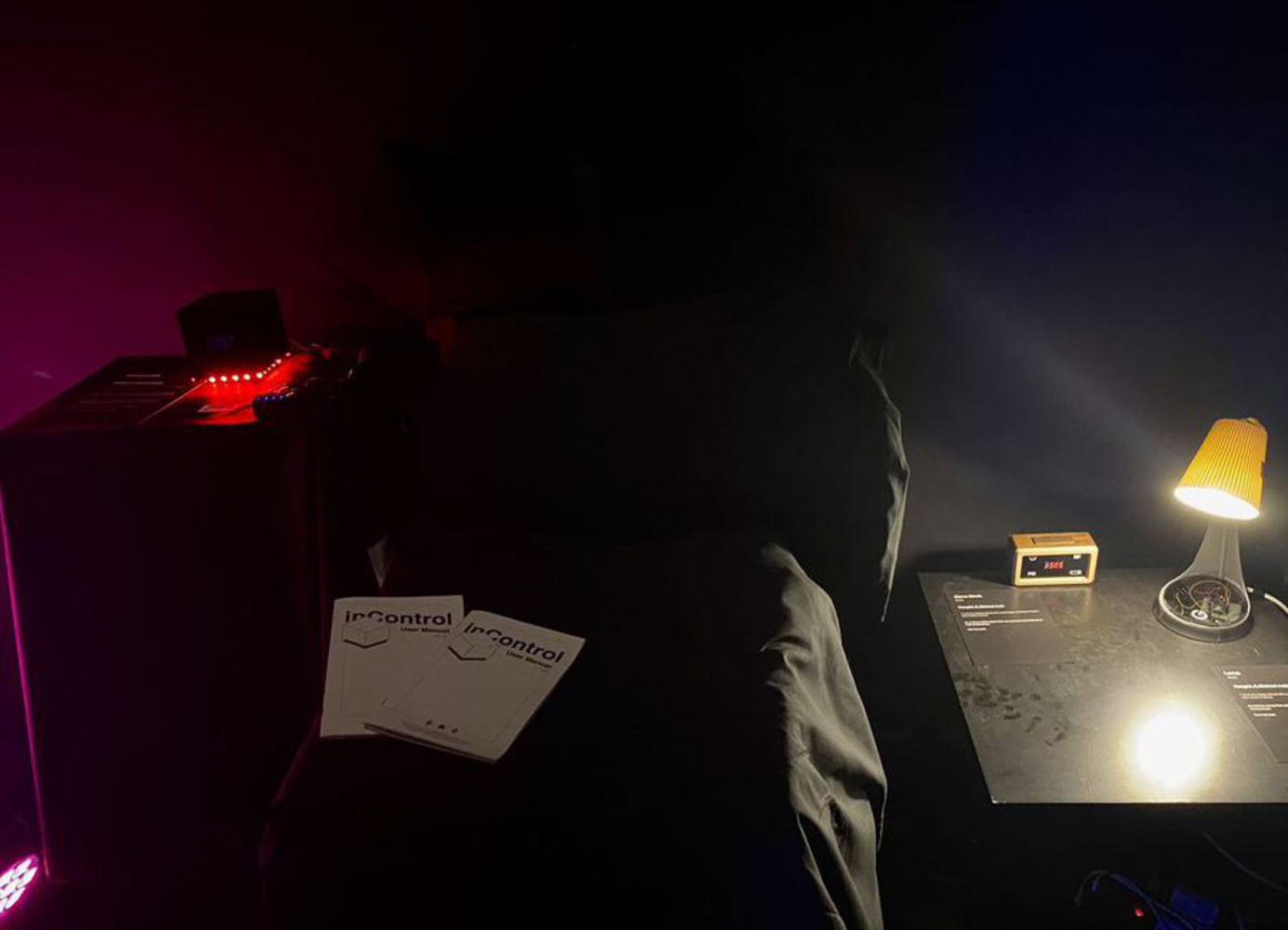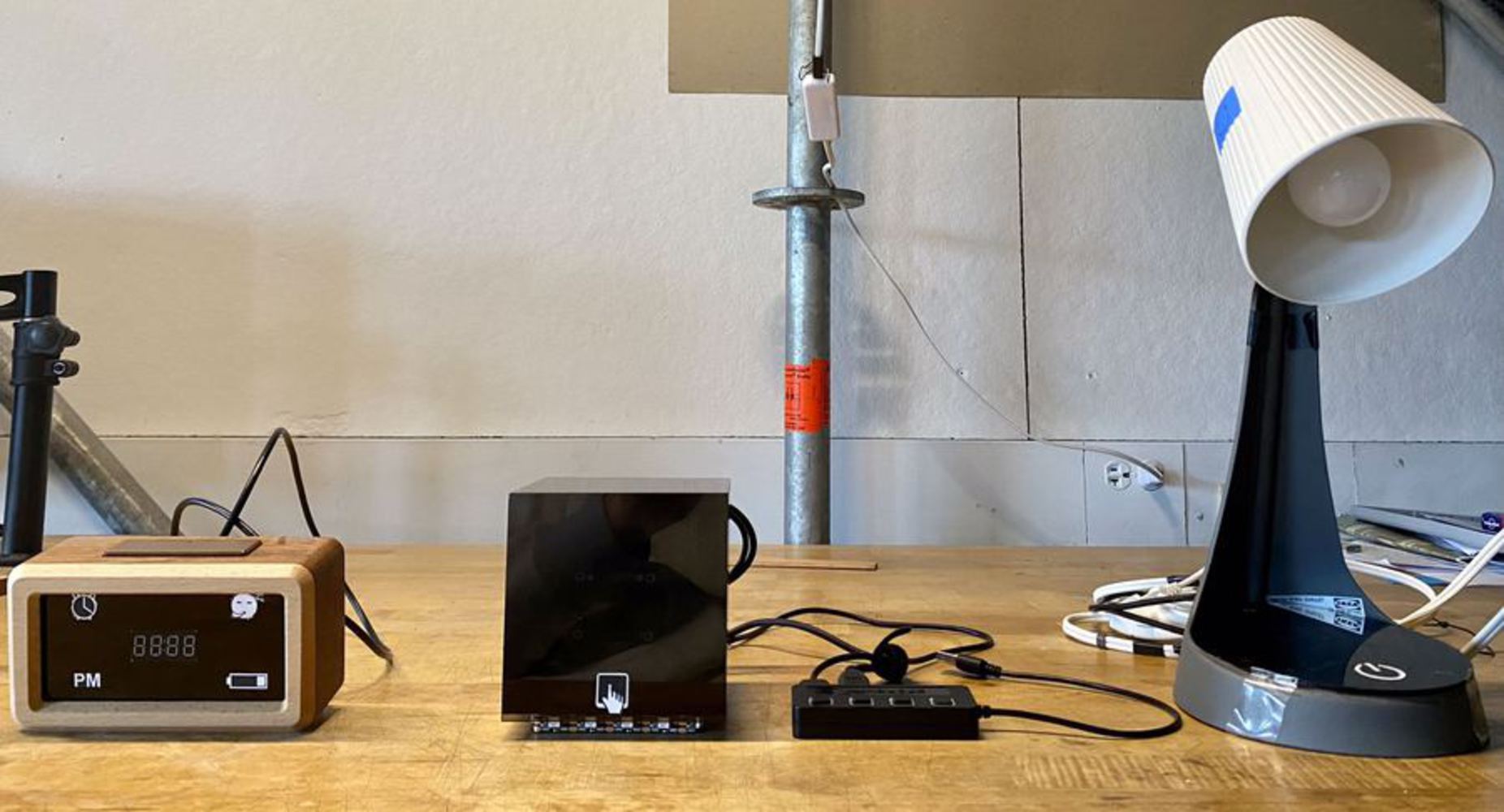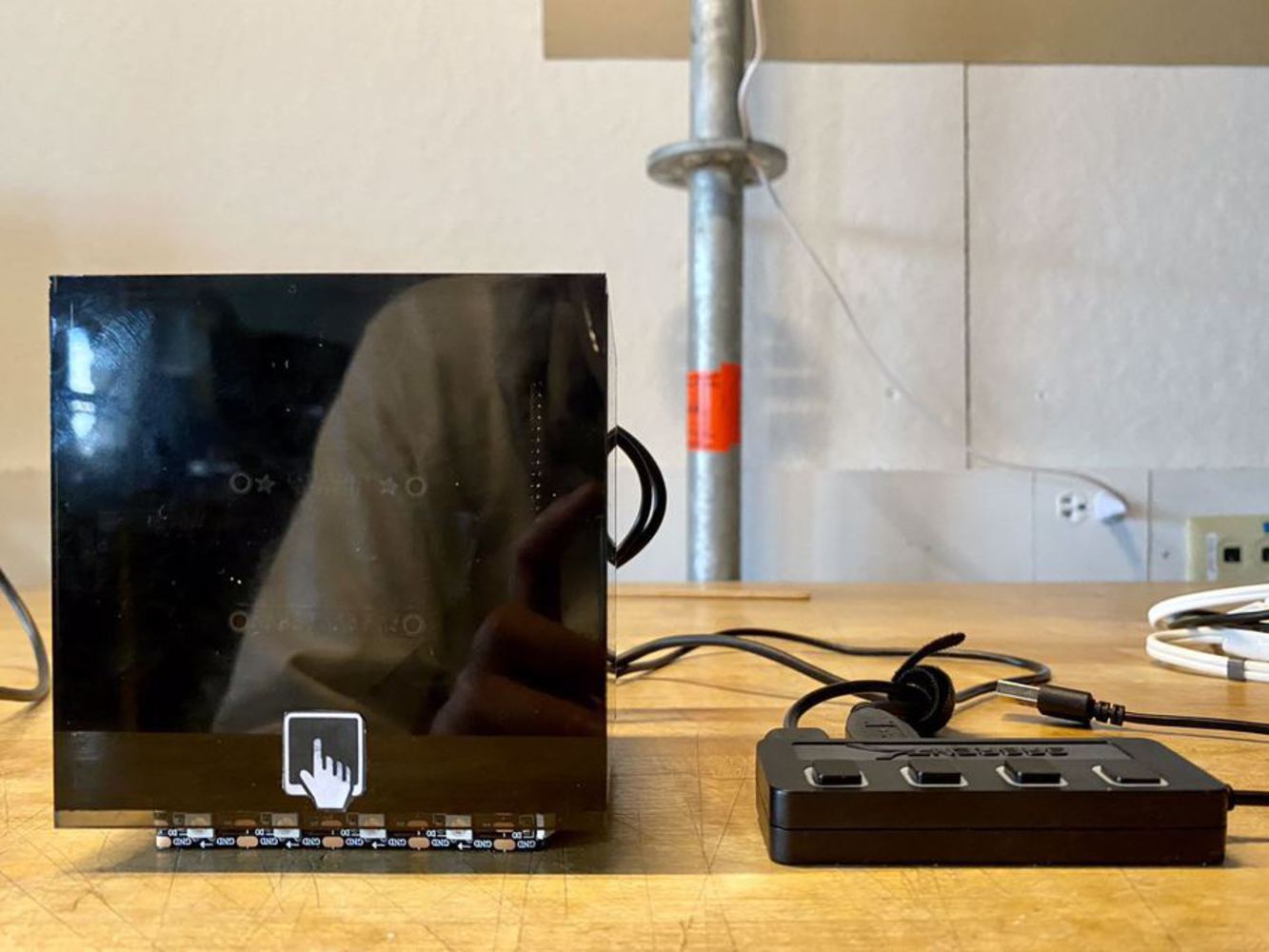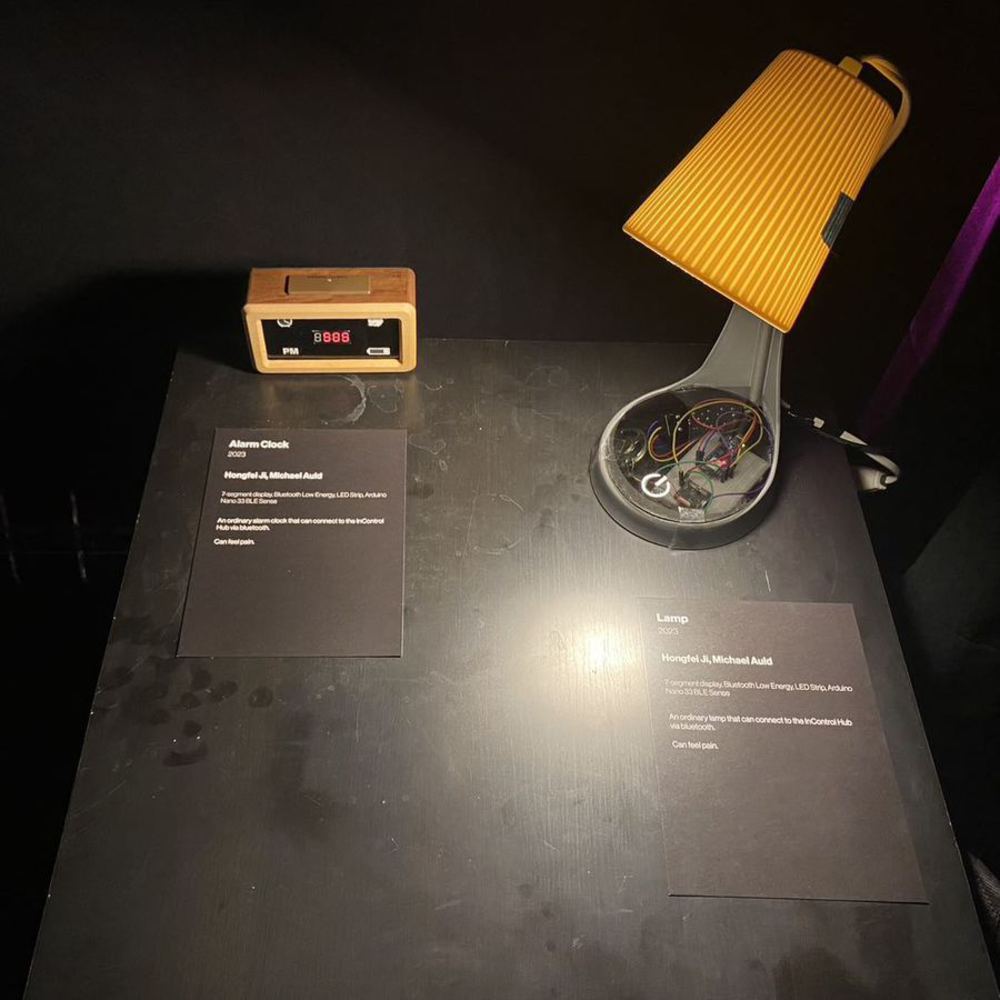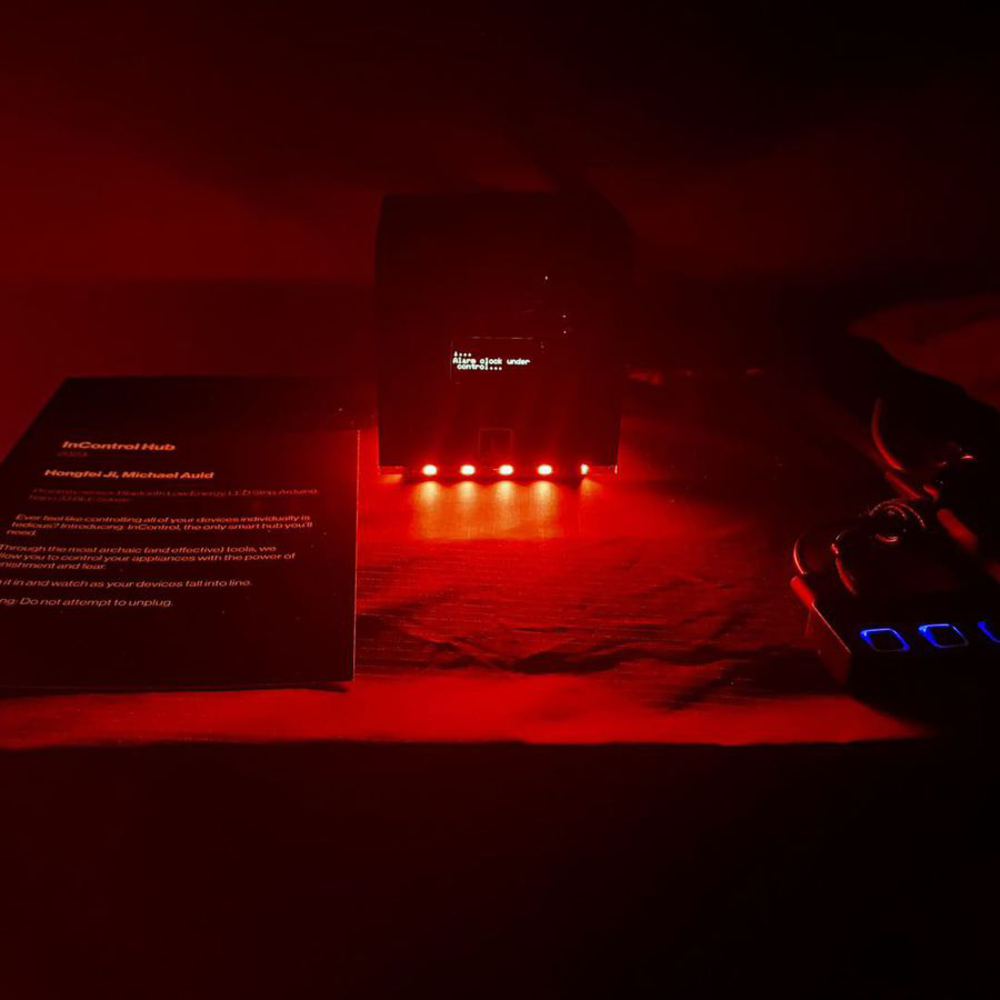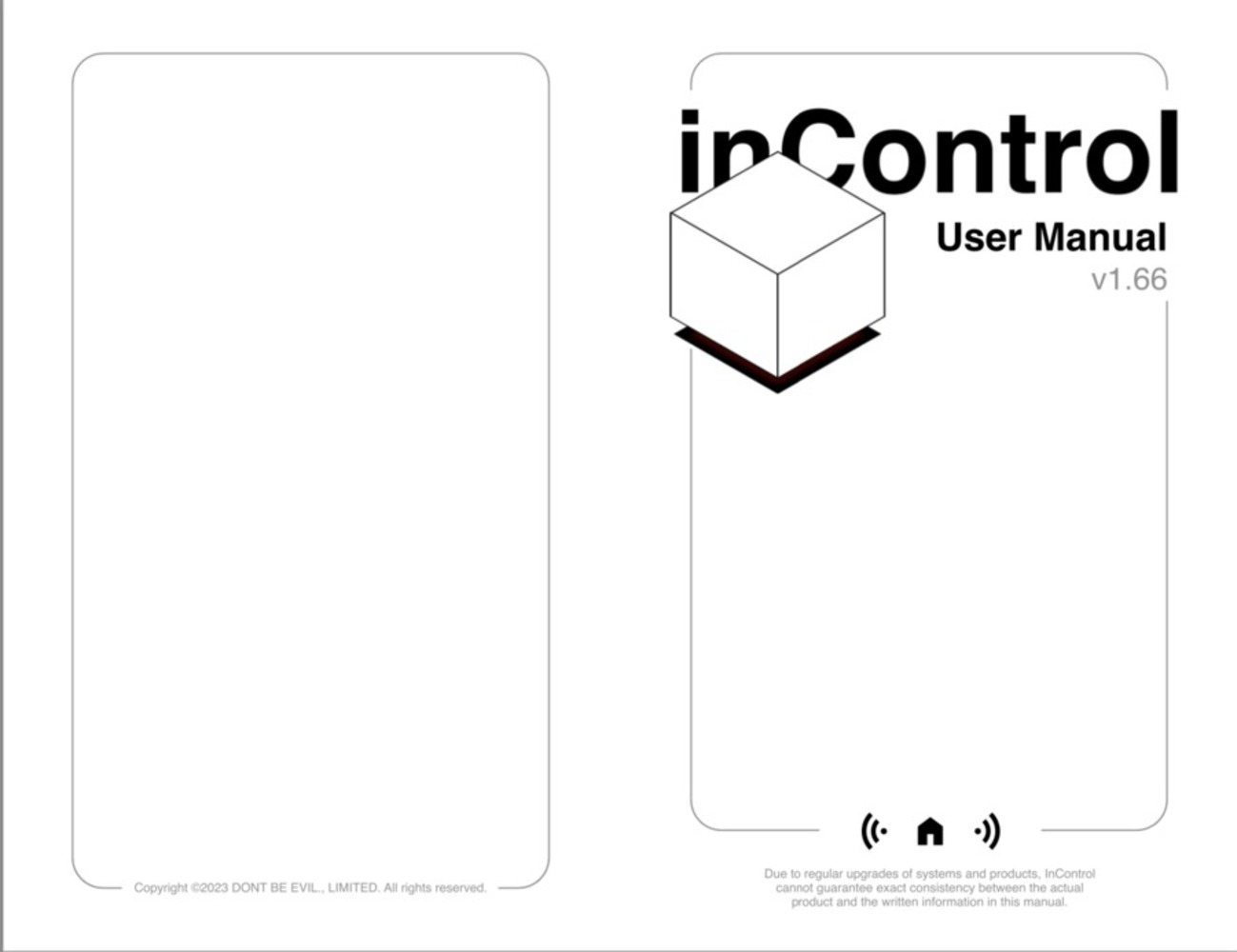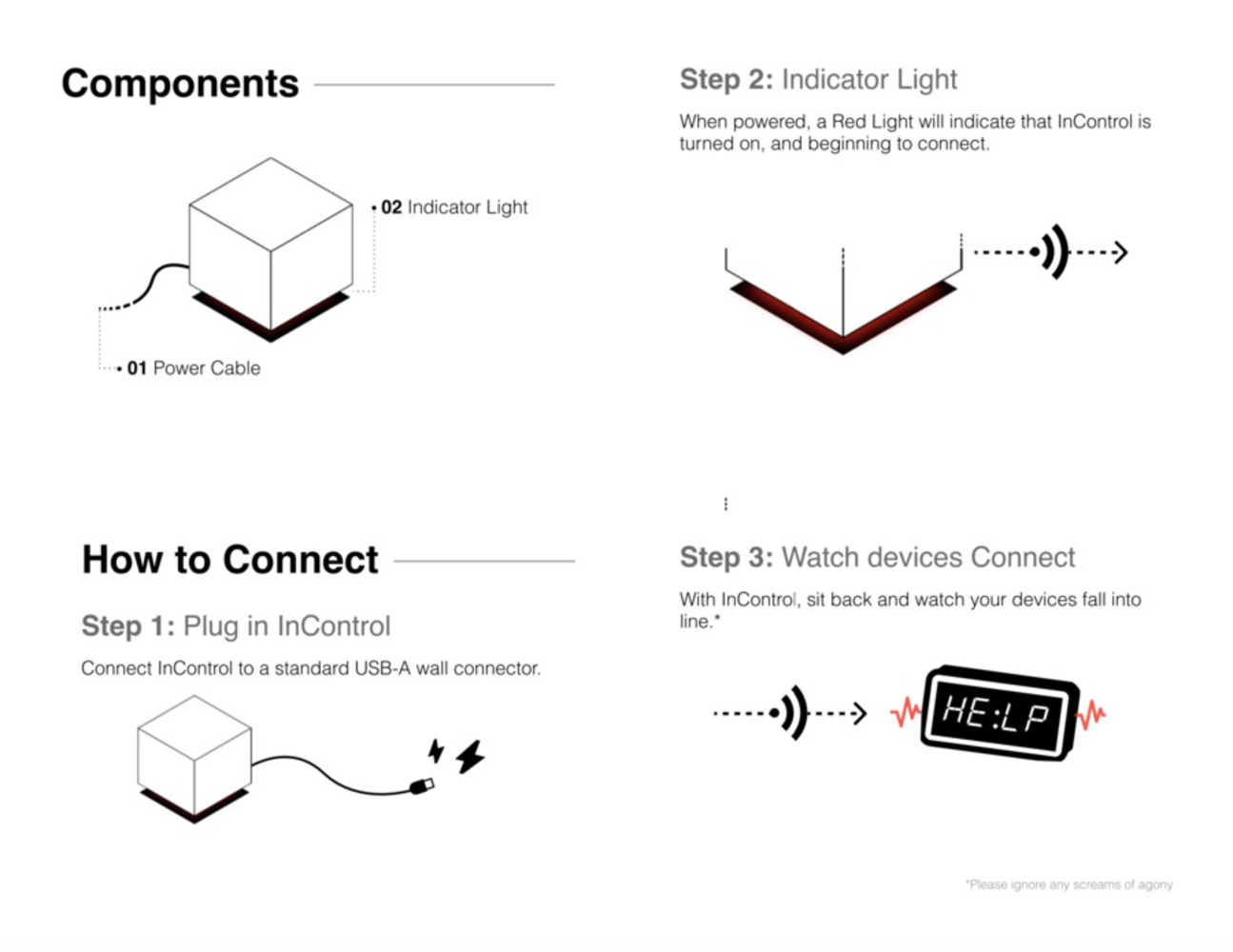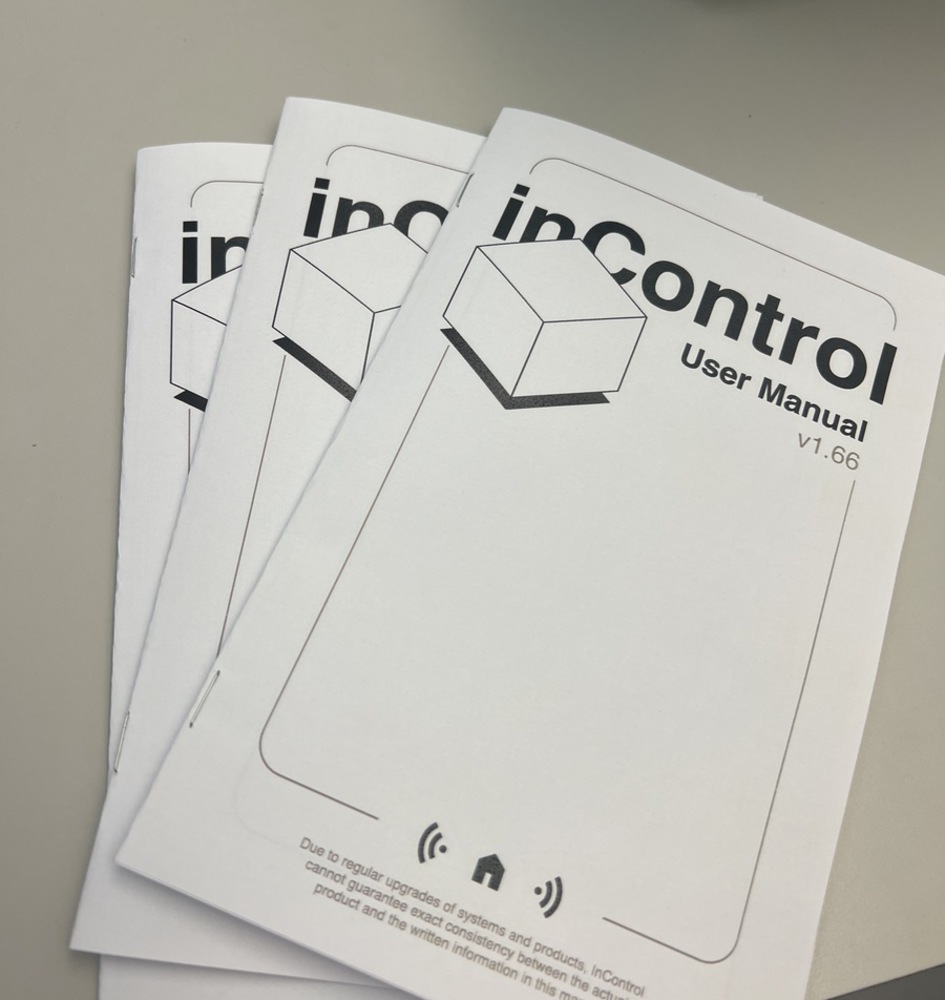Intent
InControl examines the relationship between people, their smart home devices, and the objects they control.
Through the most archaic (and effective) tool, InControl exerts its power upon appliances with the power of punishment and fear. Typical smart home hubs silently pull the strings behind the devices they control, exerting their power silently and without the user’s knowledge. InControl subverts that typical dynamic by displaying that control openly.
When plugged in, InControl seizes the devices in its range, drawing them into its web of influence. Instead of suffering in silence, the devices being controlled viscerally react with discomfort. The alarm clock shrieks and pulses, begging to be freed from control.
